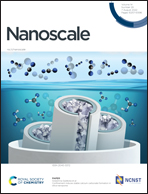Host-induced alteration of the neighbors of single platinum atoms enables selective and stable hydrogenation of butadiene†
Abstract
Tuning the coordination neighbors of the metal center is emerging as an elegant approach to manipulating the performance of supported single-atom catalysts in heterogeneous catalysis. Herein, atomically dispersed Pt species with different coordination neighbors hosted on nitrogen-doped carbon (NC) and graphitic carbon nitride (C3N4) are constructed through an impregnation-activation approach. Advanced characterization techniques including X-ray electron microscopy, X-ray absorption spectroscopy, and high angle annular dark-field scanning transmission electron microscopy reveal the different nature of active sites induced by the hosts: i.e., the Pt–Nx configuration in NC but both Pt–N and Pt–O coordinations in C3N4. H2–D2 exchange experiments and electron microscopy further evidence that Pt/NC exhibits a high propensity for H2 splitting and high thermal stability of the Pt species against agglomeration, whereas Pt/C3N4 cannot dissociate H2 and the Pt atoms easily aggregate in the reductive stream. Consequently, when applied in the selective hydrogenation of 1,3-butadiene, Pt/NC exhibits higher selectivity to butenes and excellent stability, but Pt/C3N4 behaves as a nanoparticle analogue favoring deep hydrogenation. The superior selectivity patterns of the single Pt atoms over Pt nanoparticles are rationalized by the inversed adsorption strength between the H2 and 1,3-butadiene molecules at different metal sites, which is substantiated by the kinetic studies.



 Please wait while we load your content...
Please wait while we load your content...